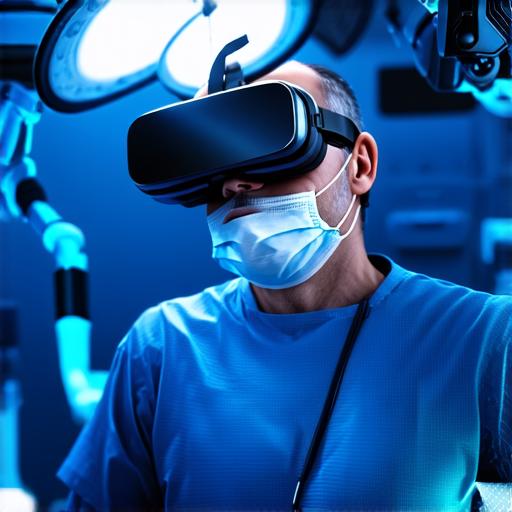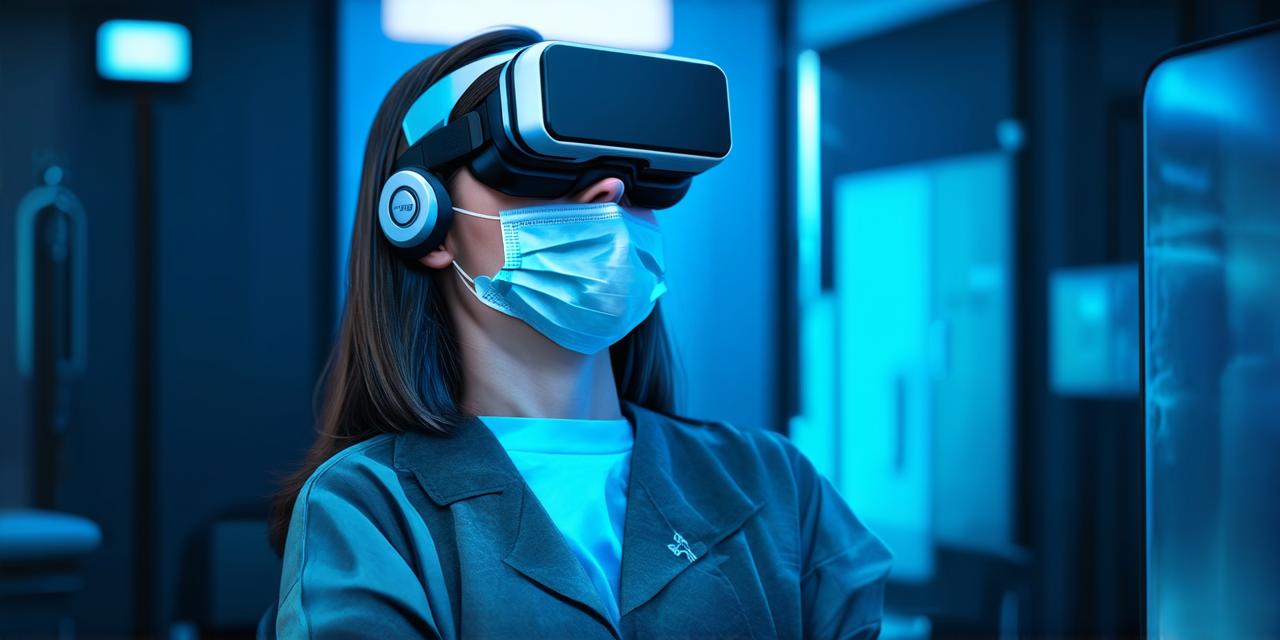The Beginning of Virtual Reality in Healthcare
Virtual reality technology first emerged in the 1960s, when researchers developed head-mounted displays (HMDs) to simulate immersive environments. These early HMDs were bulky and expensive, but they laid the groundwork for modern VR systems. In the 1980s, researchers began exploring the potential of virtual reality in healthcare, using it for medical training and simulation exercises.
One of the earliest applications of VR in healthcare was in the field of radiology. Researchers at Stanford University developed a VR system that allowed doctors to practice performing complex surgeries on virtual patients. This technology revolutionized surgical training, allowing doctors to gain experience without risking patient lives.

Virtual reality was also used for patient care in mental health settings. For example, a study published in the Journal of Psychosomatic Research found that VR therapy was effective in reducing symptoms of anxiety and depression in patients with post-traumatic stress disorder (PTSD).
Evolution of Virtual Reality in Healthcare
As technology advanced, virtual reality systems became more sophisticated and accessible. This led to a rapid expansion of VR applications in healthcare. Today, VR is being used in a wide range of settings, from medical training to patient care.
One of the most significant developments in VR for healthcare has been the creation of immersive surgical simulations. These systems allow surgeons to practice complex procedures on virtual patients, with minimal risk to real patients. This technology has revolutionized surgical training and has led to significant improvements in patient outcomes.
Virtual reality is also being used in medical education. For example, medical students can use VR simulations to learn about human anatomy and physiology, allowing them to gain a deeper understanding of the body’s inner workings.
In addition to surgical training and medical education, virtual reality is also being used in patient care settings. For example, it can be used for pain management and relaxation therapy, as well as for rehabilitation and physical therapy. Virtual reality is particularly useful in these settings because it allows patients to immerse themselves in a controlled environment that can be tailored to their specific needs.
The Future of Virtual Reality in Healthcare
Virtual reality has the potential to revolutionize healthcare in many ways. As technology continues to advance, we can expect to see even more sophisticated VR systems being developed and used in healthcare settings.
One area where virtual reality is likely to have a significant impact is in medical research. Researchers are already using VR simulations to study diseases and conditions that are difficult or impossible to replicate in real life. This technology has the potential to accelerate medical research and lead to new treatments and cures for many diseases.
Virtual reality is also expected to play an increasingly important role in patient care. As the technology becomes more accessible and affordable, we can expect to see more patients using virtual reality for pain management, relaxation therapy, and rehabilitation. Virtual reality can help to reduce the need for traditional medical procedures, such as surgery and physical therapy, while still providing effective treatment.
The potential of VR in healthcare is also being explored in other areas, such as mental health care and addiction treatment. For example, virtual reality can be used to simulate real-life situations that trigger anxiety or PTSD, allowing patients to confront and overcome these triggers in a controlled environment. Virtual reality can also be used to create immersive environments that promote relaxation and mindfulness, which can be particularly helpful for patients with mental health conditions such as depression and anxiety.
Challenges Ahead for Virtual Reality in Healthcare
Despite its many benefits, virtual reality in healthcare still faces several challenges. One of the biggest challenges is the cost of VR systems. While some VR systems are becoming more affordable, they are still expensive compared to traditional medical equipment.
Another challenge is the need for standardization and regulation of VR technology in healthcare settings. As VR technology continues to evolve, it will be important to ensure that it is used safely and effectively in healthcare settings. This will require collaboration between medical professionals, researchers, and technology developers to establish best practices and guidelines for the use of VR in healthcare.
Finally, there are concerns about the potential impact of virtual reality on patient autonomy and privacy. For example, if patients become too reliant on virtual reality for pain management or relaxation therapy, they may become less able to manage their own well-being outside of these environments. Additionally, if sensitive medical information is stored in virtual reality simulations, there may be concerns about data security and privacy.
Summary
Virtual reality has the potential to revolutionize healthcare by providing effective treatment for a range of conditions, while also promoting research and innovation in the field. However, the successful implementation of VR technology in healthcare will require overcoming several challenges, including cost, standardization, and patient autonomy and privacy concerns. Despite these challenges, the potential benefits of virtual reality in healthcare are significant, and we can expect to see continued growth and development in this area in the years ahead.
